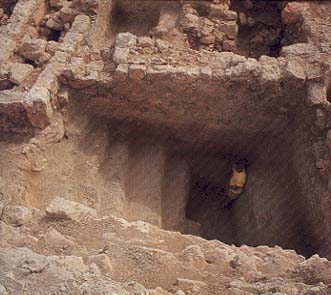Image Details

Ronny Reich
Mikveh from the upper city of Jerusalem. Discovered during Nahman Avigad’s excavations of the Jewish Quarter, the mikveh, or ritual bath, dates to the Second Temple period (second century B.C.E.–first century C.E.).
Whether mikva’ot (plural) required an otzar, a smaller storage pool containing undrawn rainwater, is now the crux of a debate. Walter Zanger has claimed they did and argues that most of the many water installations discovered in ancient Israel—which do not include an otzar—could not therefore have been mikva’ot. Ronny Reich, of the Israel Antiquities Authority, responds in the accompanying article that an otzar was not required for a mikveh during the Second Temple period and asks: If the many ancient water installations are not mikva’ot, then what are they?
